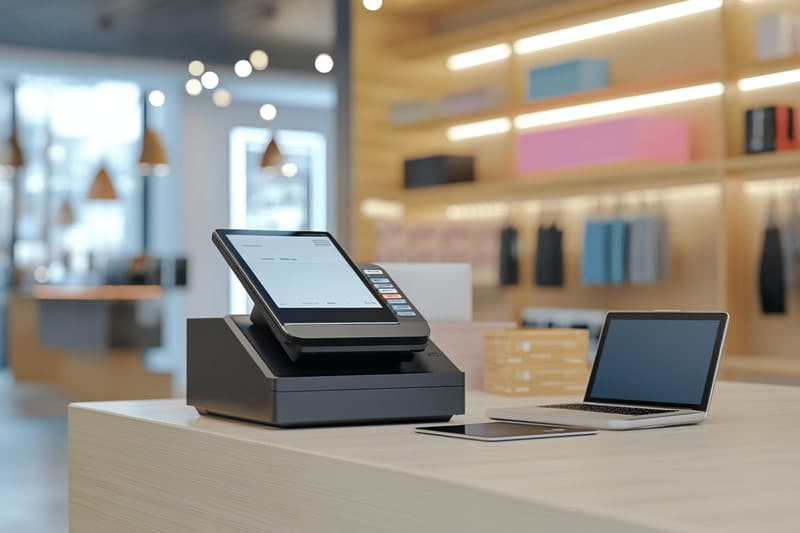For business owners navigating the world of payment processing, understanding average merchant processing fees is crucial to managing costs effectively. These fees can significantly impact your bottom line, so knowing what to expect and how to optimize your payment systems is vital.
In this guide, Payment Nerds will break down the essentials of merchant processing fees, including the components, pricing models, and ways to reduce costs.
What Are Credit Card Processing Fees?
Credit card processing fees are the costs merchants incur when accepting card payments. They typically range from 1.5% to 4% of the total transaction value[1]. These fees cover the infrastructure and services needed to process payments, including the issuing and acquiring banks, payment networks, and processors.
Understanding these fees is critical. Whether you’re running a small coffee shop or managing a large e-commerce platform, knowing the costs behind accepting credit cards helps you make informed decisions about your payment processor.
For more detailed insights, visit our Merchant Processing Fees blog.
Credit Card Processing Fee Components
Merchant processing fees consist of several interrelated components, each contributing to the overall cost. The discount rate is the total percentage of each transaction that merchants pay, encompassing assessment fees, interchange fees, and processor markups.
Assessment Fees
Assessment fees, which typically represent a small fraction of the total processing cost, are paid directly to credit card networks like Visa, Mastercard, or Discover. These credit card transaction fees are often less than 0.15% of the transaction amount. They fund the operations of the payment networks and are non-negotiable.
Interchange Fees
Interchange fees, the largest portion of the discount rate, go to the card issuer, such as a bank. These processing fees vary based on factors like card type and transaction method. For example, premium rewards cards often carry higher interchange fees due to the benefits they offer consumers, while basic debit cards are usually less expensive.
Processor Markup Fees
Processor markups, on the other hand, are the fees charged by your payment processor for managing transactions. These can be flat fees per transaction or a percentage of the total amount. Understanding how these components work together can help you identify opportunities to optimize costs and negotiate better terms.
Pricing Models for Credit Card Processing Fees
Credit card processors offer various pricing structures designed to meet businesses’ diverse needs. Tiered pricing categorizes transactions into qualified, mid-qualified, and non-qualified tiers, varying rates based on the card type and transaction method.
While this model is straightforward for businesses with simple processing needs, its lack of transparency can result in unpredictable costs. For example, a rewards credit card used for an online purchase might fall into the non-qualified tier, incurring higher fees.
Here are some of the most common pricing models credit card processors use:
Flat-Rate
Flat-rate pricing applies a consistent percentage to all transactions, making it predictable and easy to understand. This model is ideal for small businesses with low volumes or those new to payment processing.
However, it may be more expensive for businesses handling large volumes or low-risk transactions, as the flat rate includes a markup over interchange fees. Popular processors like Square use flat-rate pricing, charging around 2.6% + $0.10 per transaction for card-present payments.
Interchange-Plus
Interchange-plus pricing is another option. It offers greater transparency by breaking down costs into the actual interchange fee plus a fixed markup. This model is often the most cost-effective for medium — to large businesses, allowing for easier identification and negotiation of fees.
For example, a Visa debit card transaction might incur an interchange fee of 0.8% + $0.15, with the processor adding a 0.2% markup, resulting in a total fee of 1.0% + $0.15. Although more complex to manage, this structure provides clarity and can lead to significant savings.
Subscription
Subscription-based pricing, on the other hand, involves a fixed monthly fee for access to wholesale interchange rates with no percentage markup. This model is particularly advantageous for high-volume businesses, as it eliminates percentage-based markups and reduces overall costs.
However, for low-volume businesses, the subscription fee may outweigh potential savings. Payment processors like Payment Depot offer this model, providing businesses with a straightforward pricing structure that can streamline financial management.
Selecting the right pricing model requires careful analysis of your transaction volume, customer base, and payment preferences. Understanding these structures enables you to choose a model that aligns with your business goals and optimizes your processing costs.
A tiered pricing model like that offered by Payment Nerds is transparent and flexible, which makes it a great option for many businesses. For more insights, explore our Industries page to see how we support diverse business needs.
Average Credit Card Processing Fees Today
The cost of merchant processing fees varies widely and is influenced by card type, transaction method, and processor markup. For card-present transactions, where the card is physically swiped, dipped, or tapped, fees typically range from 1.70% to 2.05% for major card networks like Visa, Mastercard, and Discover[2]. These fees are generally lower due to the reduced risk of fraud and chargebacks associated with in-person transactions.

For card-not-present transactions, which include online, phone, and mail orders, fees range from 2.25% to 2.50%[3]. The higher rates reflect the increased fraud risk and additional security measures required for these payment methods. E-commerce businesses, for instance, often bear these higher costs as part of their operational expenses.
It’s also important to note that fees can vary depending on the type of card used. Debit cards, which draw funds directly from the cardholder’s bank account, typically have lower processing fees than rewards or corporate credit cards.
Rewards cards often incur higher fees to cover the cost of the benefits they provide to consumers, such as cashback or travel points. Meanwhile, business and corporate cards are subject to even higher fees, reflecting their added features and perceived risk.
Merchant processing fees also depend on the level of customization offered by the processor. Some processors provide tailored solutions for specific industries, adjusting their fees based on transaction volume, average ticket size, and risk profile. For instance, high-risk industries like travel or subscription services might face elevated rates due to their higher likelihood of chargebacks and fraud.
For businesses looking to benchmark their costs, it’s helpful to calculate the effective rate, which is the total processing fees divided by the total transaction volume. This figure offers a clearer picture of your actual costs compared to headline rates alone. To learn more about processing fees and how they impact your bottom line, visit Payment Nerds.
Calculating Credit Card Transaction Fees
Understanding how to calculate credit card processing fees ensures you have a clear view of your expenses. The formula is simple:
Total Fees / Total Transaction Volume = Effective Rate
While the effective rate provides a snapshot of overall costs, it may not capture all nuances. For example, premium or business credit cards typically have higher interchange fees, and smaller average ticket sizes can result in a higher effective rate due to fixed per-transaction fees[4]. Calculating fees accurately allows you to negotiate better terms and identify areas to optimize.
Factors That Affect Processing Fees
Several factors influence your merchant processing fees, including the method of transaction. Card-present transactions are generally less expensive than card-not-present transactions due to the reduced risk of fraud. Additionally, the type of card used can significantly impact costs, with debit cards often carrying lower fees compared to rewards or corporate credit cards.
Industry risk level also plays a role, with high-risk industries like travel or gambling often facing higher rates. Finally, monthly transaction volume can affect fees, as processors may offer discounts for businesses with higher volumes[5]. Being aware of these factors helps you make informed decisions and choose a processor tailored to your unique needs.
Reducing Credit Card Processing Fees
Reducing your merchant processing fees requires strategic action. One effective method is negotiating with your processor. Many providers are willing to renegotiate rates based on your transaction history and volume.
Choosing the right pricing model can also make a significant difference. Interchange-plus pricing often provides the most transparency and cost savings, while tiered pricing offers more flexible options for growing businesses.
Additionally, scrutinizing your monthly statements can help you identify and eliminate unnecessary add-ons. Implementing best practices, such as encouraging card-present transactions and using fraud prevention tools like tokenization, can further reduce costs[6]. By taking these steps, you can lower fees, improve profitability, and enhance your bottom line.
The Impact of Processing Fees on Merchants
Payment processor fees can impact businesses in various ways. High fees can erode profit margins, particularly for those with low average ticket sizes. On the other hand, offering diverse payment options, including credit cards, can enhance customer satisfaction and drive sales.
Businesses that effectively manage processing costs gain a competitive edge, enabling them to offer better pricing or additional services. Understanding these broader implications allows merchants to make smarter financial decisions and remain competitive in their markets.
Conclusion
Credit card processing fees are a necessary cost of doing business in today’s payment landscape. By understanding the components, pricing models, and factors that influence fees, merchants can make informed choices and optimize their costs.
Remember, the effective rate is just one piece of the puzzle. Consider monthly fees, transaction sizes, and the right pricing model for your business’s needs. If you’re ready to take control of your processing costs, apply now with Payment Nerds and see how we can help streamline your payment systems.
Explore our additional resources on merchant processing fees and industries we serve for further insights into merchant processing and strategies to minimize costs.
Sources
- https://www.forbes.com/advisor/business/credit-card-processing-fees/
- https://www.fool.com/money/research/average-credit-card-processing-fees-costs-america/?pStoreID=@@6qFsI
- https://merchantcostconsulting.com/lower-credit-card-processing-fees/average-credit-card-merchant-fees/
- https://squareup.com/us/en/the-bottom-line/managing-your-finances/credit-card-processing-fees-and-rates
- https://www.nerdwallet.com/article/small-business/credit-card-processing-fees
- https://www.pcisecuritystandards.org/











